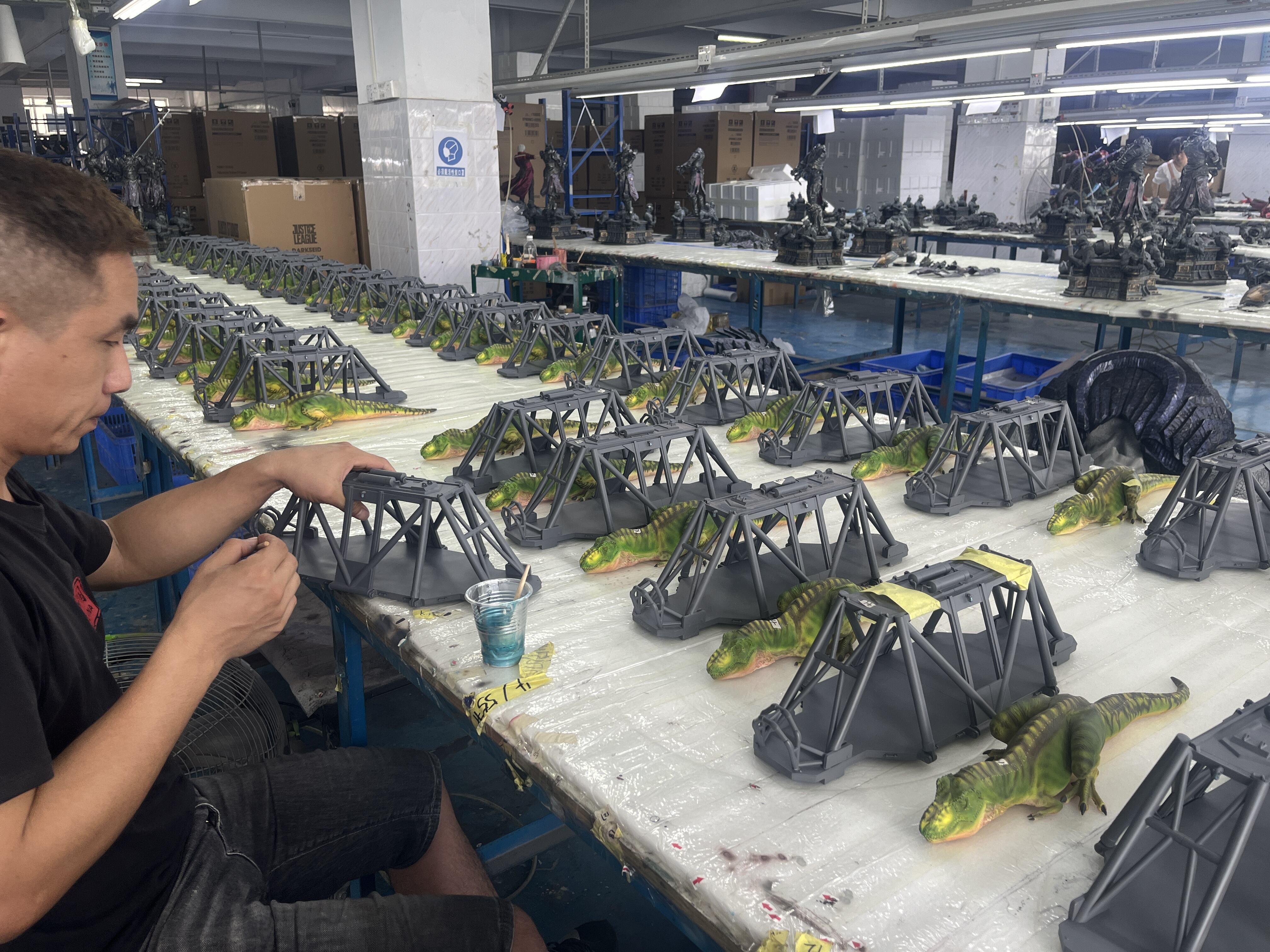エポキシレジン創作の芸術を極める
その世界は 樹脂製の工芸品 は人気爆発で、その無限の創造的ポテンシャルによりアーティストや趣味人を魅了しています。エレガントなジュエリーから mesmerizing なものまで 家庭 インテリア装飾まで、エポキシレジンはありふれた物をすばらしい芸術作品へと変える多用途な素材です。この包括的なガイドでは、レジンクラフトの魅力的な世界へ踏み出すために必要なすべてをご紹介します。
レジンジュエリーのガラスのような仕上げに惹かれる方でも、自分だけの目を引くサービングトレーを作りたいと夢見る方でも、レジンを使った工作の基本を理解することで成功が約束されます。レジン工作の魅力は完成した見た目だけではなく、制作そのものの瞑想的なプロセスにもあります。
レジンクラフトに必要な材料と道具
基本的なレジン用品
初めてのレジンクラフトプロジェクトに取り組む前に、正しい材料を集めることが重要です。まずはクラフト用に設計された高品質なエポキシレジンキットから始めましょう。レジンとハードナーの両方が必要で、これらを混ぜ合わせることで最終的な製品が作られます。また、正確な測定カップ、混合用容器、攪拌道具も揃えてください。正確さが適切な硬化にとって不可欠です。
樹脂を取り扱う際には保護が最も重要です。ニトリル手袋、呼吸用マスク、保護めがねを用意してください。樹脂は硬化過程で強い蒸気を発生させるため、換気の良い場所で作業することが不可欠です。作業面を保護し、片付けを容易にするためにシリコンマットの購入も検討してください。
型と装飾品
シリコン型は多くの樹脂クラフトの基礎となるものです。コースターやジュエリー用のシンプルな型から始め、自信がついてきたら型のコレクションを広げていきましょう。プロ仕様のような仕上がりを確実にするために、表面が滑らかで細部まで明確な型を探してください。型用の保管容器は品質の維持やほこりの付着防止に役立ちます。
レジンクラフトの魅力は、使用する添加物にあることが多いです。マイカパウダーやアルコールインク、ラメ、ドライフラワー、その他の装飾素材を準備しておきましょう。これらの素材を用いることで、ユニークな効果や個性的なデザインの作品を作成することができます。また、使われる素材がレジンキャストに適しているかを確認し、望ましくない反応を避けるための注意も必要です。
レジンの化学的性質と安全知識
化学的性質と硬化プロセス
成功したレジンクラフトとは、エポキシ樹脂の背後にある化学的性質を理解することから始まります。レジンと硬化剤を混合すると、硬化と呼ばれる化学反応が始まります。このプロセスにより、液体の混合物が固体へと変化します。温度や湿度、正確な混合比率は、レジンが適切に硬化するかどうかに影響を与えます。多くのレジン製品は1:1の比率を必要としますが、常に製造元の仕様を確認してください。
硬化プロセスは段階的に進行します。最初に、混合物は「ポットタイム」と呼ばれる一定の期間(通常は30〜45分)作業可能状態のままです。その後、ジェル状の段階を経て最終的な硬化へと進みます。完全に硬化するには通常、環境条件や特定の樹脂の種類によって24〜72時間かかります。
職場の安全プロトコル
樹脂クラフトの制作には安全ガイドラインを厳守することが必要です。常に換気の良い場所で作業し、可能であればファンを使って空気を外へ排出するようにしてください。作業スペースは清潔に整理整頓しておき、誤ってこぼす事故を防ぎましょう。混合時だけでなく、作業全体を通して保護具を着用してください。
温度管理は安全と成功の両方において重要です。多くの樹脂は70〜75°F(21〜24°C)の温度で最も適切に作動します。極端な温度は硬化に影響を及ぼし、予期しない結果をもたらす可能性があります。樹脂の材料は常温で保管し、硬化中の作品をほこりから保護してください。

基本技術の習得
適切な混合方法
成功したレジンクラフトの基礎は、適切な混合技術にあります。まず、レジンと硬化剤を正確に同量ずつ測定してください。僅かな誤差でも硬化に影響を与えることがあります。混ぜるときはゆっくりと3〜5分間しっかりと混ぜ、容器の側面や底をこそげ取りながら行ってください。流す前に、混ざり具合が均一で筋状の模様がないことを確認してください。
よくある混合ミスには、泡を作ってしまうほどの激しい攪拌や、不十分な混合があります。一貫した結果を得るために、体系的なアプローチを取ることが重要です。中には攪拌回数や混合時間を数えることで精度を保つ方法を取るクラフターもいます。この工程を急ぐと、完成した作品に柔らかい部分や未硬化の箇所ができてしまうことを忘れないでください。
基本的な効果の作成
スキルを伸ばすためにシンプルな効果から試してみましょう。マイカパウダーやレジン用染料を使った単色の流し込みから始めてください。慣れてきたら、違う色を重ねたり、渦巻き模様を作ってみたりしてみてください。レジンがどのように動いて固まるのかを理解することで、こうした効果を予測し、コントロールすることが可能になります。
プロ仕様のレジンクラフトでは気泡管理が重要です。流し入れた後にヒートガンまたはバーナーを短時間使用して表面の気泡を除去してください。熱源を sweeping するように動かすことで、特定の箇所が過熱されるのを防ぎます。複雑なデザインに挑戦する前に、この技術をシンプルな作品で練習してください。
高度なデザイン技術
重ね塗りと埋め込み
基本的な流し込みに慣れたら、レジンクラフトに奥行きと立体感を生み出すための重ね塗りの技法に挑戦してみましょう。段階的に作業し、各層が次の層を追加する前に部分的に硬化するのを待ちます。この方法により、色が意図せず混ざるのを防ぎ、作品に明確な層を作り出すことができます。
オブジェの埋め込みには注意深い計画と準備が必要です。埋め込むアイテムが完全に乾燥していることを確認し、必要に応じてコーティングを行ってください。部分的に硬化したレジンの中に慎重に配置し、望みの深さを実現してください。花などの自然素材は十分に乾燥させ、変色を防ぐためコーティングすることが重要です。
ユニークな質感の演出
レジンクラフトでユニークな表面テクスチャを作り出すために、さまざまなツールや技法を試してみましょう。特定の顔料と併用する際、ヒートガンを使用することでセル(斑状模様)やレース状の模様を作り出すことができます。また、シリコン製のツールを使って、レジンが硬化する前に意図したパターンに整えることも可能です。成功した技法は、今後の参考のためにクラフト日記に記録しておくと便利です。
テクスチャの表現は、添加剤を戦略的に使用することでも得られます。金属粉末や砕いたガラス、砂などを加えることで興味深い表面を作り出すことができます。ただし、添加物はレジンの流動性や硬化特性に影響を与えるため、技法を調整する必要があります。
共通 の 問題 の 解決
硬化不良の防止
ベテランのクラフト愛好家でも、レジン作品の硬化に問題を抱えることは時折あります。よくある問題としては、柔らかい箇所、白く濁った仕上がり、あるいは粘り気のある表面などが挙げられます。これらは多くの場合、混合比率の誤りや温度変化が原因です。こうした問題を避けるためには、作業環境を一定に保ち、成分を正確に計量することが重要です。
硬化に関する問題が発生した場合は、条件と結果を記録してパターンの特定に役立ててください。湿度や材料の賞味期限切れが硬化に影響することがあります。新しい技法や材料の組み合わせを使用する際は、大きなプロジェクトに取り組む前に小さな作品で必ずテストを行ってください。
表面の不具合の修正
表面の不具合が生じたからといって、必ずしも最初からやり直す必要はありません。小さな気泡や傷は、薄く樹脂のトップコートを塗布することで修復できることが多いです。より深刻な問題の場合は、研磨して仕上げ直す必要があります。修理技術は、目立たない箇所から練習を重ねながら段階的に習得していきましょう。
予防は修正するよりも常に簡単です。使用後は型をしっかりと清掃し、ほこりのない環境で作業を行い、硬化中は作品を慎重に取り扱いましょう。このような習慣を身につけることで、樹脂工芸品の修理作業を大幅に減らすことができます。
よく 聞かれる 質問
樹脂が完全に硬化するまでにはどのくらいの時間がかかりますか?
ほとんどのエポキシ樹脂は、ブランド、温度、湿度レベルによって異なりますが、完全に硬化するまでに24〜72時間かかります。表面が24時間後には乾燥しているように感じられても、推奨される完全な硬化時間を待つことで、樹脂クラフトの最大限の耐久性が確保されます。
硬化後も樹脂が粘り気を残す原因は何ですか?
粘り気のある樹脂は、一般的に混合比率の誤り、混合時間の不足、または不適切な温度条件によって生じます。必ず成分を正確に測定し、少なくとも3〜5分間しっかりと混ぜ、作業温度を70〜75°F(21〜24°C)の間で維持してください。
樹脂クラフトにあらゆる種類の型を使用できますか?
シリコン型が樹脂クラフトには最適ですが、すべての型が適しているわけではありません。樹脂専用またはエポキシ使用に適したシリコン型を使用してください。樹脂がこれらの素材に永久に接着する可能性があるため、特定のプラスチック製の型は避けてください。
